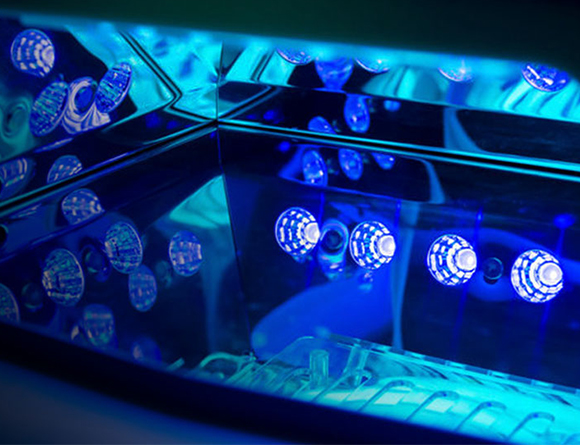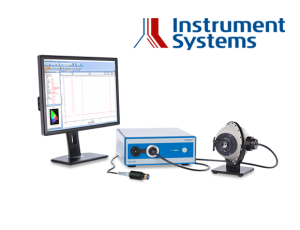UV-LEDs
Reliable UV measurement technology from 200 nm

UV radiation calls for special measuring methods
Ultraviolet (UV) radiation can be described as electromagnetic radiation with extremely short wavelengths between 200 and 400 nm that is invisible to the human eye. It is subdivided according to wavelength into the ranges UV-A (315-400 nm), UV-B (280-315 nm) and UV-C (200-280 nm).
A wide range of uses for UV sources has arisen by virtue of their germicidal and photolytic properties. These include water and air disinfection, hardening, coating, surface inspection or lighting for indoor gardening.
Use of UV-LEDs
In the last few years UV-LEDs have become an attractive alternative to conventional UV lamps. They are small, inexpensive and energy-saving. This permits ever new applications, e.g. in water treatment plants or air sterilization.
In order to achieve the desired effect, it must be ensured that the spectral properties of the UV-LED are sufficient for the respective application. For this reason it is necessary to have accurate knowledge of the emitted spectrum of UV-LEDs and to determine it in the production process for each individual UV-LED.
The challenge: Precise radiometric characterization of UV-LEDs
Measurement of the radiant flux and irradiance of UV-LEDs is a particularly demanding task. Low radiant flux – in particular in UVBs and UVCs – necessitates highly sensitive optical measuring systems for precise radiometric characterization. This also applies to use in the lab (incl. product development, reference system for production) and in production.
In the production environment sensitivity is an even more decisive factor, in order to achieve short measuring times accompanied by high detector modulation for high throughput volumes.

